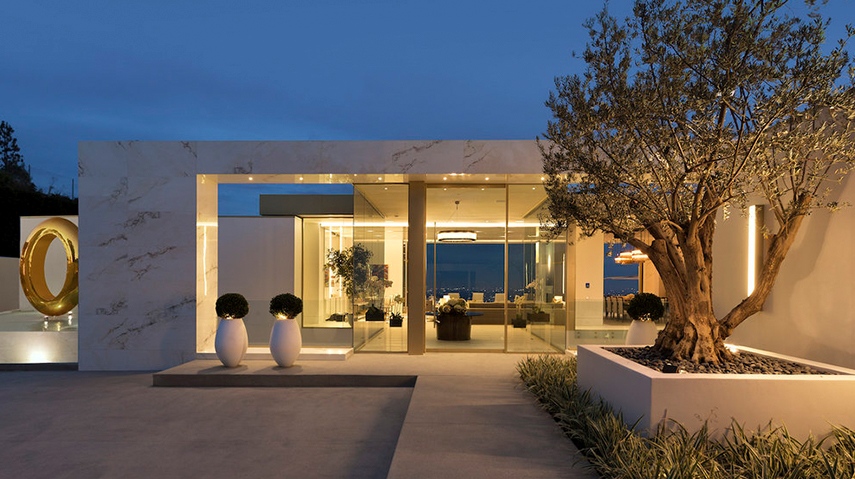Maple Ridge?s Kanaka Hill has been drawing more than a little attention
Shawn Conner
The Vancouver Sun
Kanaka Hill
Project Address: 23539 Gilker Hill Road, Maple Ridge
Project Size: 43 townhomes
Bedrooms: three- and four-bedrooms, four-bedrooms + rec room, all with 3.5 baths
Price: from $594,900
Developer: Quarry Rock Developments
Architect: Atelier Pacific Architecture Inc.
Interior designer: Portico Design Group
Contact name: Chad August
Contact phone: 604-479-2263
Sales centre: 23539 Gilker Hill Road
Hours: by appointment
Website: kanakahill.com
Completion: spring 2018
Even before he saw the plans for Kanaka Hill, Don Hart liked the townhome project.
“I just felt good about it,” said the Maple Ridge-based realtor, who was the first to buy into the project.
“There was something in me that said, ‘This is the place where you want to be.’ I was the first one there and the first one to buy one, and we’re quite excited about it.”
The development, which comprises 43 townhomes on a hilltop in the Kanaka Creek neighbourhood of Maple Ridge, is near a protected greenbelt, but five minutes from the town centre.
“It’s more of a nature walking path nature interface kind of park,” said Greg Lowe, director of sales for Rare Earth Project Marketing. “It’s a big attraction in that area.”
Lowe rates the location, which sits above an elementary school, as “nine-and-a-half out of 10.”
“It’s a very, very good site,” he said. “Many of the buyers in the Maple Ridge area have been waiting for this project because they know how nice it’s going to be because of the site.”
In an effort to do justice to the surroundings, developer Quarry Rock borrowed elements from British equestrian country estates, including Tudor elements in the architecture, landscaping and fencing. Details include stone and wood accents, gable roofs and dormers, wrought iron and mullioned windows and entry porches.
Interiors are open and spacious.
“When I first walked into the show home, the feeling of how expansive it was was quite impressive,” said Dan Thomson, also of Rare Earth. “It feels like a single-family home, with a big living area and kitchen. And the interiors, from the colour schemes to the finishings, are not trendy but classic.”
Kitchen features include plenty of counter space, a large multi-functional island (in most homes), polished quartz countertops and subway-tile backsplash, shaker cabinets with soft-close doors and drawers, and stainless steel undermount double-bowl sinks with pullout spray faucets. The KitchenAid appliance package includes a 36-inch french door Energy Star refrigerator with pull-out drawer freezer, a 24-inch dishwasher and 30-inch gas range with electric oven, chimney hood and fan.
All bathrooms come with polished quartz countertops and backsplash with undermount porcelain basins and dual-flush toilets with soft-close seats. Main bathrooms also include a deep soaker bathtub, vanity drawers with full-width mirror, and porcelain wall and floor tiles.
Ensuites come with in-floor radiant heating, polished quartz double vanity sinks, two-drawer floating vanity with full mirror medicine cabinets for added storage, deep soaker tubs and an oversized frameless glass shower with rain showerhead and separate handheld wand, and well-lit double vanities.
Additional features include private and spacious two-car garages (tandem or side-by-side depending on the home type) and, in most homes, mud rooms off the garage. All homes have private yards, and kitchens open to patios or decks.
Flooring is laminate in living spaces with carpeting in bedrooms, stairs, hallways and basements, although buyers can opt for laminate over carpeting.
Another option is a sizable built-in pantry/cabinetry set that includes a countertop and a tile backsplash.
“The thing about those is, they’re not like a pantry that’s two feet wide,” Thomson said. “I think the smallest one is around 10 feet. It’s quite a spectacular option.”
The interior comes in two colour schemes. Hart picked the lighter one, he says, “because it’s nice and bright.”
The buyer also likes that the community is gated, and that it’s on the east side of Maple Ridge and hence “further out.”
“I actually brought a client in because I felt so good about it and she ended up buying one too,” he said.
Eighty-five per cent of the homes sold within two weeks of going on sale. Most of the buyers have been local to the area, Lowe said.
“We have some downsizers who are attracted to this higher-end product in a very high-quality location. Professional families maybe moving up from a condo in a different community, like the Tri Cities areas, or from within Maple Ridge and getting started with their first townhome.”
Hart and his wife, who are in their late fifties, chose a four-bedroom.
“We’re in a big house now, and we’re not quite ready to downsize yet,” he said. “You know how it is. The nest is never empty. You always expect someone (kids) to come back. Especially nowadays, for kids to get out on there own, if they ever get stuck there’s always a place to say. And we have people from out of town come to stay with us. We like the space.”
Hart likes the outdoors too, and the nearby 10 kilometres of hiking trails, though he says he’s not an “extreme” outdoors person.
“The trails are a two-minute walk away,” he said. “It’s really beautiful.”
The creek itself ensures that the area will be designated protected greenbelt. “The future for that area will include trails and access for the public,” Lowe said. “It will be a very nice thing to live beside.”
Within Kanaka Hill itself, the builder is adding outdoor amenities such as a seating area with hanging swings with a view of Golden Ears Provincial Park. There will be a small playground area, as well as a community garden bordering the greenbelt. “Then the rest of the surrounding area is farmland,” he said. “So there’s a lot of open space around our property.”
Hart is happy to be on the ground floor, so to speak, of the development.
“You know how you get a feeling that this is the one that you want?” he said. “I had my cheque book ready before I even talked to anybody. It was jut one of those things. My wife and I agreed that we were going to buy it and she hadn’t even seen it. I took her up on a Saturday and she goes ‘I love it, I absolutely love it. It’s perfect.’ And I said, ‘Yeah. That’s what I thought. Glad you like it.’”
© 2017 Postmedia Network



